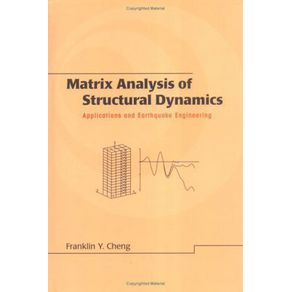Extensively classroom tested Includes student problems and solutions Expands theory to applications useful to practicing engineers Expands theory to applications useful to practicing engineers.Uses state-of-the-art computer technology to formulate displacement method with matrix algebra. Facilitates analysis of structural dynamics and applications to earthquake engineering and UBC and IBC seismic building codes.Characteristics of free and forced vibrations of elementary systems; Eigensolution techniques and undamped response analysis of multiple-degree-of-freedom systems; Eigensolution methods and response analysis for proportional and non-proportional damping; dynamic stiffness and energy methods for distributed mass systems; dynamic stiffness method for coupling vibration, elastic media and Pdeltal effect; consistent mass method of frames and finite elements; numerical integration methods and seismic response spectra for single- and multi-components seismic input; formulation and response analysis of 3-D building systems with walls and bracings; various hysteresis models of non-linear response analysis; static and dynamic lateral-force procedures and related effects in building codes of UBC-94, UBC-97, and IBC-2000; problems; solutions. Appendices: Lagrange's equation; derivation of ground rotation; vector analysis fundamentals; transformation matrix between JCS and GCS; transformation matrix between ECS and GCS for beam column; transformation matrix and stiffness matrix; of beams column with rigid zone; computer program for Newmark method; computer program for Wilson method; computer program for CQC method; Goel steel-bracing hysteresis model and computer program; Takeda model for RC columns and beams and computer program; Cheng-Mertz model for bending coupling with shear and low-rise shear walls and computer program; Cheng-Lou axial hysteresis model for RC columns and walls and computer program.



